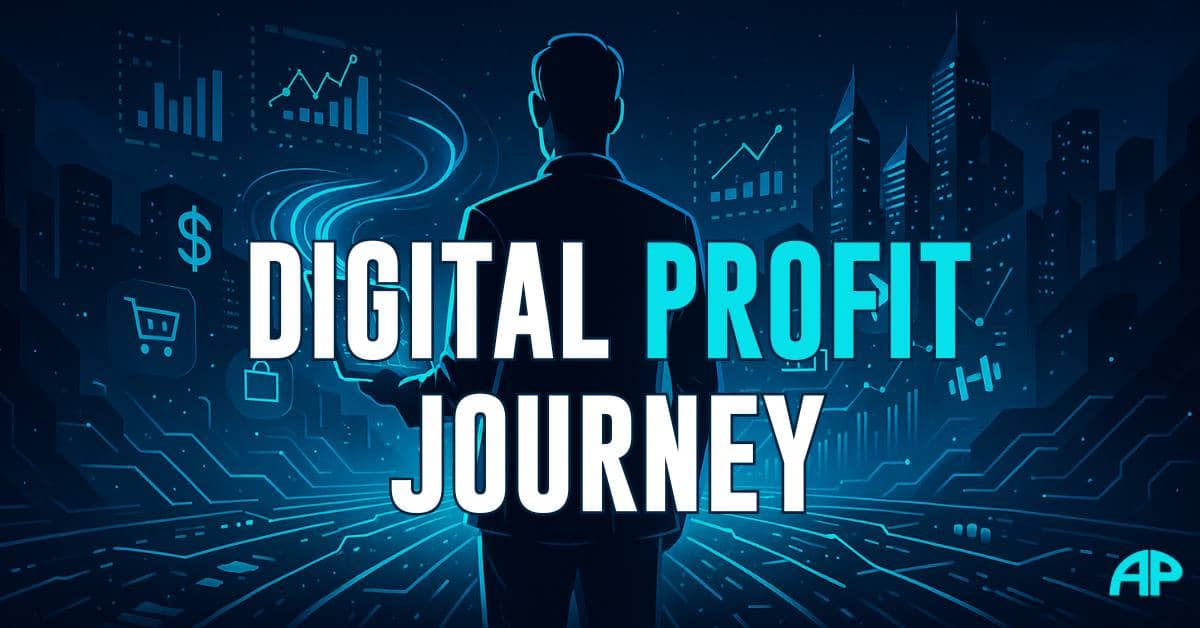Break Free from the 9-5 Grind with Affiliate Marketing and Build a Flexible Online Business
Table of Contents
- Kickstart Your Affiliate Journey
- What is Affiliate Marketing?
- Why Start Affiliate Marketing?
- How Affiliate Marketing Works
- Choose Your Affiliate Niche
- Find Affiliate Programs
- Build Your Affiliate Platform
- Create Content That Converts
- Drive Traffic to Your Content
- Track and Optimize Results
- Avoid Common Mistakes
- Getting Started in Affiliate Marketing
Kickstart Your Affiliate Journey
Dreaming of earning money online without creating your own products? Then getting started in affiliate marketing could be the perfect path for you.
Affiliate marketing has exploded in popularity because it offers incredible flexibility and potential for passive income. Many people dive in hoping for fast results, but real success requires a solid foundation and consistent action.
In this guide, you’ll learn exactly how to get started in affiliate marketing, how to pick the right niche, choose reliable programs, create content that converts, and drive traffic that leads to sales. Let’s simplify it all so you can hit the ground running.
What is Affiliate Marketing?
Before getting started in affiliate marketing, it’s crucial to know what the term means. Affiliate marketing is a business model where you promote other people’s products or services and earn a commission for each sale or action generated through your unique referral link.
It’s a win-win for both you and the product creator. Businesses get more exposure and sales without spending money upfront on advertising, while you earn income by recommending solutions your audience needs.
Here’s why affiliate marketing is popular:
- Low costs: No inventory, manufacturing, or shipping headaches.
- Freedom: Work from anywhere—your laptop can be your office.
- Scalable: Your income can grow as your traffic and content expand.
- Diverse opportunities: Almost every niche has affiliate programs waiting for you to join.
When you’re getting started in affiliate marketing, remember, it’s about building trust. People buy through your links because they believe your recommendations are genuine.
Why Getting Started in Affiliate Marketing is a Smart Move

Thousands of people are getting started in affiliate marketing every day, and for good reason. It’s one of the simplest ways for beginners to enter the world of online business without huge risks.
Here’s why starting affiliate marketing makes so much sense:
✅ Low Start-Up Costs: Unlike traditional businesses, you don’t need to invest thousands upfront. Often, you can begin with just a website, some social media accounts, and your time.
✅ No Product Hassles: You avoid customer service, shipping, and returns. Your focus is purely on marketing and content.
✅ Endless Niches to Choose From: Whether it’s fitness, tech, personal finance, pets, or travel, there’s an affiliate program for virtually every interest.
✅ Passive Income Potential: Great content can earn commissions for years after it’s published. You do the work once, but your content can keep generating income around the clock.
✅ Flexibility: Want to work early mornings or late nights? Prefer working from a beach or your kitchen table? It’s your choice.
When you’re getting started in affiliate marketing, understand that while it’s simple to start, it takes consistent effort to build trust and authority.
How Affiliate Marketing Works
Let’s demystify the steps for getting started in affiliate marketing so you know exactly how it functions behind the scenes.
Affiliate marketing boils down to these simple steps:
- Join an Affiliate Program: Sign up with companies or networks offering products in your niche.
- Get Your Unique Links: These special URLs track any sales or actions resulting from your referrals.
- Create Helpful Content: Whether it’s blog posts, videos, or social media, your content introduces the product to your audience.
- Drive Traffic to Your Content: More eyes on your links mean higher chances of earning commissions.
- Earn Commissions: Each sale, lead, or action earns you a piece of the profit.
Here’s a simple example: Let’s say you start a blog about home workouts. You review a set of resistance bands, include your affiliate link, and a reader clicks to buy them. You earn a commission, often anywhere from 5% to 50%, depending on the program.
Knowing how it all fits together is key to getting started in affiliate marketing successfully.
Choosing Your Niche Before Getting Started in Affiliate Marketing
Picking a niche is one of the biggest decisions when getting started in affiliate marketing. Many beginners make the mistake of trying to promote anything and everything. That usually leads to scattered efforts and low results.
Instead, focus on a specific niche. A niche means a particular topic, interest, or problem area. For example, instead of targeting the entire fitness industry, narrow it down to “home workouts for busy moms” or “vegan meal plans.”
To choose your niche wisely, ask yourself:
- What topics am I passionate about or experienced in?
- Is there an audience actively searching for solutions in this niche?
- Are there affiliate products available that people actually buy?
- Can I create helpful content around this topic consistently?
Examples of solid niches for getting started in affiliate marketing include:
- Personal finance tips for millennials
- Eco-friendly lifestyle products
- Photography equipment for beginners
- Pet health and wellness
- DIY home decor ideas
Remember, the goal isn’t just to pick something trendy but to find a niche where you can build trust and provide real value. That’s the foundation of sustainable affiliate income.
How to Find the Right Affiliate Programs
Selecting the right affiliate programs is crucial when getting started in affiliate marketing. Not all programs are created equal—some pay better, convert higher, and treat affiliates with more support.
Here’s how to evaluate your options:
✅ Commission Rates: Check how much you’ll earn per sale. Rates vary wildly—from a few percent (like Amazon’s 1-10%) to 30–50% or even recurring commissions for subscriptions.
✅ Reputation: Only promote products from trustworthy companies. Your reputation depends on theirs.
✅ Cookie Duration: Longer cookies mean you still earn if someone buys days or weeks later. A 30-day cookie is typical, but some programs offer 60, 90, or even lifetime tracking.
✅ Conversion Rates: A high-commission product is worthless if nobody buys it. Look for programs with proven sales funnels.
✅ Support & Resources: Good programs provide banners, email templates, and even coaching to help you succeed.
Top affiliate networks to explore when getting started in affiliate marketing include:
- Amazon Associates: Massive range of products but low commissions.
- ShareASale: Covers many niches and offers great reporting tools.
- ClickBank: Famous for digital products and high commissions.
- CJ Affiliate: Trusted for a huge variety of brands.
- Rakuten Advertising: Another solid network with diverse brands.
Choosing quality programs helps build trust with your audience and improves your income potential.
Building Your Platform for Affiliate Marketing
Your platform is where you’ll share your affiliate content. When getting started in affiliate marketing, choosing the right platform is essential.
Your options include:
✅ A Blog or Website: This is the most powerful asset. It’s searchable, builds long-term authority, and gives you full control over your content. A website also helps you rank in Google for keywords like “best home workout equipment” or “how to get started in affiliate marketing.”
✅ YouTube Channel: Video marketing is booming. Product reviews, tutorials, and comparisons work exceptionally well on YouTube. It’s a fast way to build trust because viewers feel like they “know” you.
✅ Social Media: Instagram, TikTok, Facebook, and Pinterest are all effective channels. You can share short-form content and direct followers to your affiliate links or website.
✅ Email Marketing: An email list is one of the most valuable assets in affiliate marketing. You can nurture relationships, provide value, and promote products directly to people who already trust you.
While social media alone can work, having your own website ensures you’re not at the mercy of algorithms or platform changes. It’s your online home base for getting started in affiliate marketing.
Creating Content That Converts
Content is the heartbeat of your affiliate business. When getting started in affiliate marketing, the goal isn’t to “sell” but to educate, inform, and help your audience solve problems.
Types of content that work well:
✅ Product Reviews: Honest opinions build trust. Include pros, cons, and personal experiences.
✅ How-To Guides: Teach readers how to achieve a goal using your affiliate product. E.g., “How to Start Affiliate Marketing as a Beginner.”
✅ Comparison Posts: Compare two or more products to help people make decisions. For instance, “ConvertKit vs Mailchimp: Which is Better for Bloggers?”
✅ Best-of Lists: Roundups like “Best Budget Fitness Equipment for Home Gyms.”
✅ Case Studies or Personal Stories: Share real-life results using a product you’re promoting.
A few tips to maximize conversions when getting started in affiliate marketing:
- Always disclose your affiliate relationships clearly to stay compliant and build trust.
- Focus on high-quality, helpful content rather than hard-selling.
- Add strong calls-to-action so readers know how to take the next step.
Remember, the more value you provide, the more likely your readers will click your links and make a purchase.
Driving Traffic to Your Affiliate Content

Content alone won’t generate sales unless people see it. When getting started in affiliate marketing, your mission is to drive targeted traffic to your platform.
Here’s how to get eyes on your affiliate content:
✅ SEO (Search Engine Optimization): Optimize blog posts for relevant keywords. Long-tail keywords like “getting started in affiliate marketing for beginners” often have less competition and are easier to rank for.
✅ Social Media Promotion: Share your posts on platforms where your audience hangs out. Engage in conversations, answer questions, and build relationships.
✅ Paid Ads: Once you’re earning commissions, reinvest some profits into ads. Google Ads and Facebook Ads can send highly targeted traffic to your content quickly.
✅ Pinterest: A fantastic platform for driving traffic to blogs, especially in niches like home decor, recipes, fitness, and personal finance.
✅ Email Marketing: Send valuable tips and recommendations directly to your subscribers, keeping them engaged and returning for more.
When getting started in affiliate marketing, focus on one or two traffic strategies at first. Master those before trying to do everything at once.
Tracking and Optimizing Performance
Tracking your results is vital for success when getting started in affiliate marketing. Without data, you’ll be guessing instead of making informed decisions.
Here’s what to track:
Click-Through Rates: Identify which links or pages attract the most clicks.
Conversions: Measure the products or offers that actually generate sales or leads.
Traffic Sources: Check whether your audience comes from Google, social media, or referrals.
Top-Performing Content: Focus efforts on the pages driving the highest income.
Useful tools include:
- Google Analytics
- Affiliate dashboards from networks like ShareASale or Amazon
- Link cloaking tools like Pretty Links or ThirstyAffiliates for cleaner URLs and tracking clicks
Review your numbers weekly or monthly. When you know what’s working, you can double down on it and avoid wasting time on strategies that don’t deliver.
Data is your secret weapon for growing your income when getting started in affiliate marketing.
Common Mistakes to Avoid When Getting Started in Affiliate Marketing
Even seasoned marketers make mistakes, so keep these common pitfalls in mind when getting started in affiliate marketing:
🚫 Promoting Too Many Products at Once: Focus on a handful of quality products instead of trying to sell everything under the sun.
🚫 Not Understanding Your Audience’s Needs: Your recommendations should solve real problems. Know your readers deeply.
🚫 Skipping Disclosures: Failing to disclose affiliate relationships isn’t just illegal—it erodes trust. Always be transparent.
🚫 Expecting Instant Results: Affiliate marketing can take weeks or months to gain traction. Consistency is key.
🚫 Ignoring SEO: Organic traffic can become your biggest source of income over time. Don’t neglect optimization.
Learning what not to do is just as important as knowing what actions to take when getting started in affiliate marketing.
Getting Started in Affiliate Marketing

Getting started in affiliate marketing is one of the most accessible and exciting paths to earning money online. It offers freedom, scalability, and the chance to build an income stream that works for you even while you sleep.
But remember, it’s not magic. Success comes from choosing the right niche, selecting trustworthy programs, creating high-value content, and promoting it consistently. The journey takes time, but the rewards can be life-changing.
So, if you’re serious about getting started in affiliate marketing, don’t wait. Start building your your online business today, create content that helps people, and take your first step toward financial freedom.
Need guidance on getting started in affiliate marketing? Check out Affiliate Marketing for Beginners and start today with no regrets.




